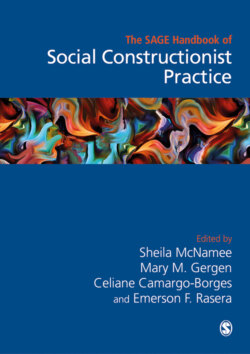Читать книгу The Sage Handbook of Social Constructionist Practice - Группа авторов - Страница 78
На сайте Литреса книга снята с продажи.
Cultural Transformation: Protest and Pluralism
ОглавлениеAs widely documented, a major shift in the political landscape took place in the second half of the 20th century in both the United States and across Europe. Where there had been widespread trust in the existing political institutions, a steadily expanding chorus of protest emerged. In the United States the first major wave of protest was embodied in the civil rights movement in the 1950s. This was followed by the equal rights movement, and most vociferously in the anti-war movement in the 1960s. One might say that, anti-establishment protest virtually became a way of life, with gay and lesbian activists, anti-psychiatry advocates, environmental activists, and pro-life/pro/choice combatants soon participating.
One important outcome of these movements was the questioning of all established forms of authority – not only governmental, but scientific and religious as well. All groups, great or small, voiced the right to speak out, to claim a legitimacy equal to others. While conflict was pervasive, there was also an emerging understanding and appreciation of the potentials of a pluralist society in which new ways of life could emerge, forms of life that favored inclusion, accommodation, and collaboration.
Widely recognized for their liberal political leanings, social scientists were often in the vanguard in nurturing such pluralism. And in the same spirit of critique and protest, traditional definitions of scientific knowledge and method came under attack. Ideological and political critique was already under way in Europe, but was soon joined by a powerful wave of feminist scholarship. Soon joining in were scholars concerned with the homophobic, individualist, capitalist, and Eurocentric biases of the social sciences. As common within the culture at large, there was an accompanying urgency to act. The possibility of combining scholarly work with social activism became increasingly plausible (Conquergood, 1982, 2002). The impact of this confluence remains robust in performative social science today (Keifer-Boyd, 2011).
Yet, the possibilities of conjoining the arts and sciences for such purposes must be traced to what was taking place within the artistic communities themselves. Many such communities thrive on challenging tradition. Indeed this has been the leitmotif of what we call modern art. However, during this period of broad political unrest, many artists from across the spectrum sought ways of using their various media for purposes of social and political change. Thus making their way into the scene were movements in performance art, pop art, disposable art, political art, street art, and more. In the groundbreaking films of Frederick Wiseman (Titicut Follies, Ballet, In Jackson Heights), and Jennie Livingston's award-winning Paris is Burning the lines separating ethnography, politics, and entertainment were erased.
